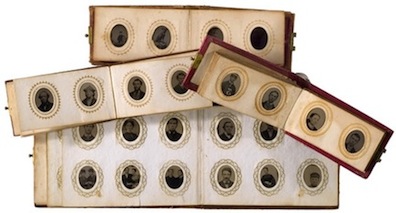Assignment: This post is about salted paper prints, cyanotypes, platinum prints, carbon prints and gum bichromate prints. Read chapters 14 in the textbook (free pdf version here or purchase hard copy here).
Notes/highlights on these processes/photos:
Cyanotypes: Fairly common and simple to identify due to the bright blue (cyan tone). Used to make a variety of types of photos, including antique real photo postcards, snapshots, cabinet cards and CDVs. Can see paper fibers under microscope. No silvering, often lacking aging to image.
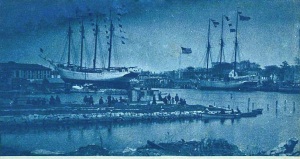
Salted paper prints: Rare and highly desirable process. Usually identified by early date (1840-1860), brownish tones and matte surface (albumen prints are usually though not always glossy). Can see paper fibers in image. Images can be blurry/mottled if printed from paper negative or sharp and clear if printed from glass negative. Can have significant deterioration to image and paper due to aging. Salted paper print images have the same texture as the paper they are printed on.
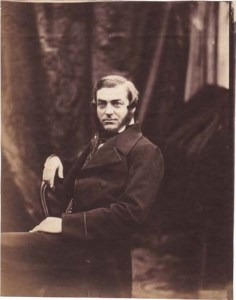
Gum bichromates have a distinct artistic/charcoal or pastel sketch look, often blurry quality distinct to other processes. Do a google search to view old and new gum bichromate photos and all their artistic designs.
Platinum prints can come in different tones, including brownish, but are often a distinctly steely black and white, They are scarce, have superior images, have matte surfaces and lack silvering that is often found on period gelatin silver and albumen prints. Matte surface gelatin silver prints are sometimes mistaken for platinum prints, but you can see the paper fibers under the microscope in the image of a platinum print but not with a gelatin-silver print. If an old platinum print was stored in contact with another piece of paper, such as in a stack of photos or a folder, there will often be a transfer image on the other sheet– a lighter ‘ghost’ image. This is a sure sign the photo is platinum print. My experience is that while platinum prints are much rarer than albumen prints and gelatin silver prints, they can be found and you likely will come across them now and then in antique stores, estate sales and the like.
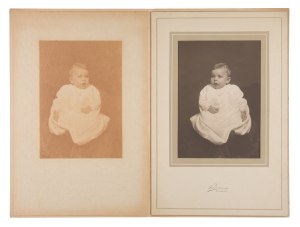
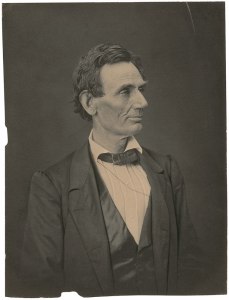
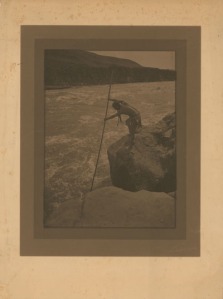
Carbon prints are scare and valuable. They are glossy in the dark areas bot not the light– so the glossiness will differ in different parts of a single photo image. The paper fibers can be seen under magnification. Under strong magnification, you can sometimes pigment particles and the surface often has a textured, relief surface.
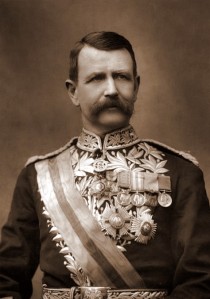
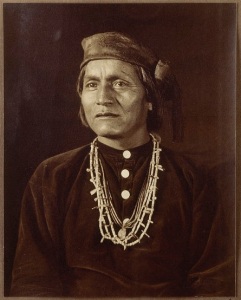
* * * *
All of these old time processes are still made, though only by artists and skilled photo enthusiasts. They are no longer used commercially. The modern subject and artistic style usually is a clear giveaway a photo is modern and, as they are sold by artists who want full credit, they are usually clearly advertised as modern creations. Also remember the always useful black light test for identifying modern paper. Modern photo paper is usually quite thick and lack aging signs.
* * * *
Course Assignments:
